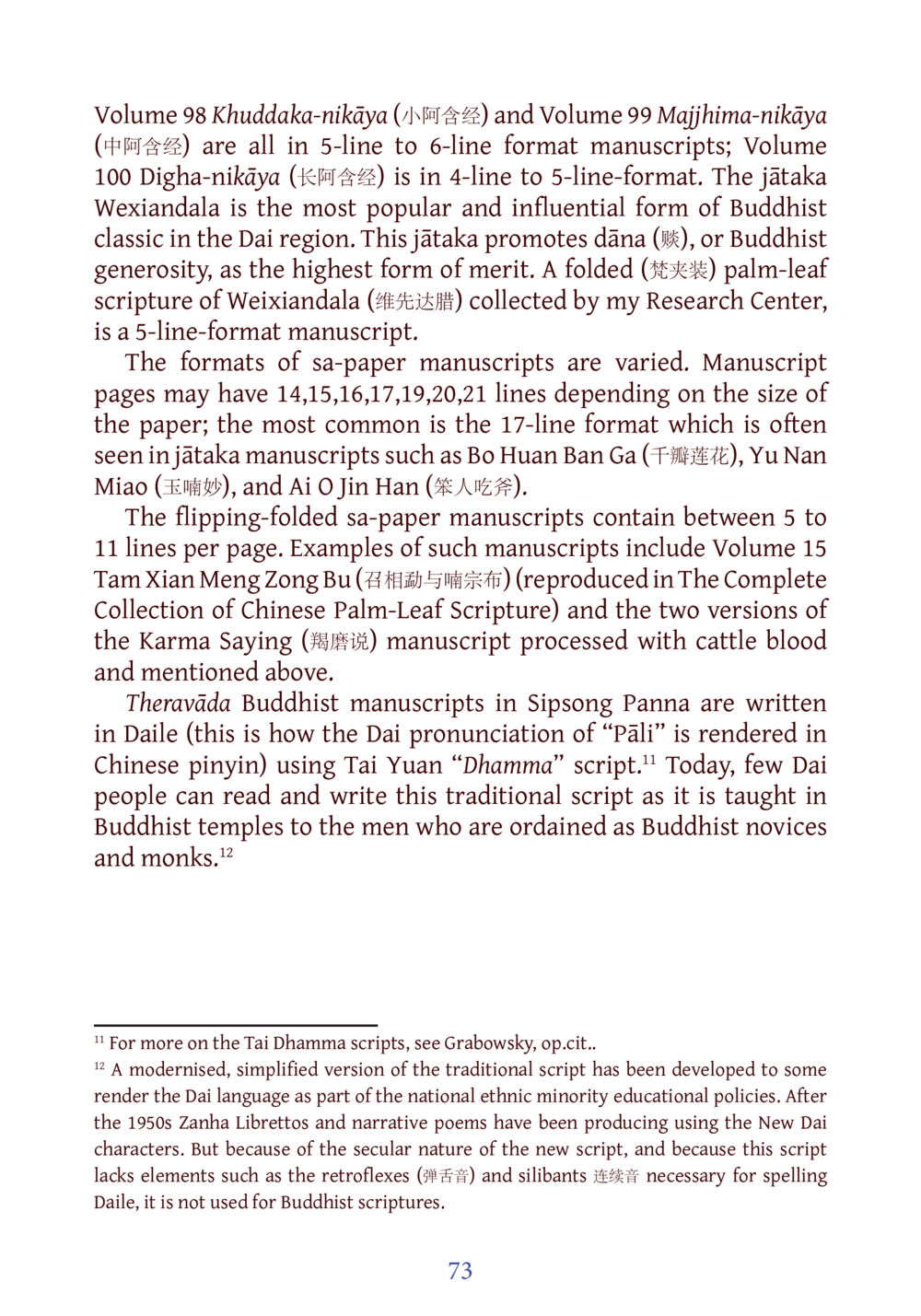Buddhist Manuscript Formats in Dai Region : หน้า 94/141
DIRI Journal : หน้า 94/141 Explore the various formats of Buddhist manuscripts in the Dai region, highlighting the significance of dāna in traditional texts.
0 ครั้ง

สรุปเนื้อหา
Volume 98 Khuddaka-nikāya and Volume 99 Majjhima-nikāya are primarily in 5-6 line formats, while Volume 100 Digha-nikāya is formatted with 4-5 lines per page. The jäṭaka Wexiandala represents a key Buddhist text promoting dāna, or generosity, as the highest merit. An example is a palm-leaf scripture collected by my Research Center in a 5-line format, showcasing varied manuscript formats such as 14-21 lines depending on paper size. Most common are 17-line formats found in numerous jäṭaka texts. The Theravāda manuscripts in Sipsong Panna utilize the Tai Yuan “Dhamma” script, with few able to read the traditional version. Modern adaptations exist, though they lack essential phonetic elements for accurately representing the Dai language in scripture. For further insights, visit dmc.tv.
หัวข้อประเด็น
-Buddhist Manuscript Formats
-Significance of Dāna
-Theravāda Buddhism
-Tai Yuan Dhamma Script
-Dai Culture and Language
ข้อความต้นฉบับในหน้า
หน้าหนังสือทั้งหมด













































































































































